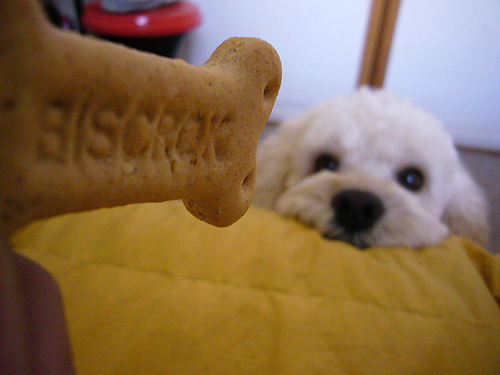Overeating can lead to life-threatening obesity. We recommend that you limit treats to 10% of the total daily calories you give your pet. The amount of calories you need depends on your weight, age and activity level. Limit your treats to 29-45 calories. Ask your veterinarian about your pet’s needs. Be careful: some candies can contain more than 75 calories each!
Incentivizing training with treats
Training with treats can be used for both cats and dogs. The keys are consistency and moderation. If you are using treats to train your pet, such as to stay off the couch always keep the couch off limits. Instead of practicing good behavior through a large reward, try training him with frequent small, low-calorie treats.
Make your own candies
For homemade treats, try cooking small pieces of chicken, liver or eggs. You can also bake pet cookies using recipes found online. Some canned prescription diets can be sliced and baked for a tasty and crunchy alternative. It is a good idea to consult these prescriptions first with your veterinarian, especially if your pet has health problems.
Treats can stimulate exercise
Treats act as great motivators. Boost your pet’s brain and body by using different types of treats to train agility exercises. You can also help your cat or dog get around by hiding dry treats in the house. This is an especially effective tactic with indoor pets. Another option: some toys are made so you can hide a treat inside them. Your puppy has to play, kick and wrestle with the toy to retrieve his tasty treat.
Dental health treats
Certain pet treats can do double duty by helping your pet keep its teeth healthy. Ask your veterinarian about safe chew toys, such as rubber balls or flexible bones.
Say No to begging
Reward your pet with treats, but only for the behavior you want to encourage. For example, if your pet sits quietly at your feet while you cook, offer a reward. On the other hand, if he behaves like a beggar, stop. Do not give in to whining, barking or loud meowing.








